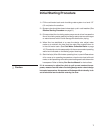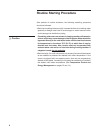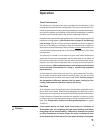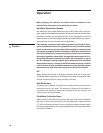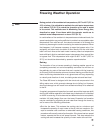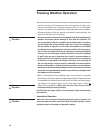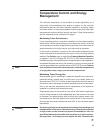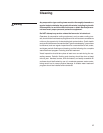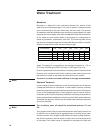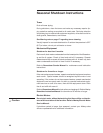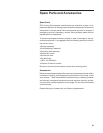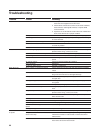
15
Maintenance
➠
Well maintained equipment gives the best operating results and the least
maintenance cost. A regular inspection schedule is recommended to
insure effective safe operation of the cooling tower. Use the Inspection
and Maintenance Schedule on page 25 to obtain continuously good
performance with least tower maintenance. See the Inspection Checklist
on pages 26 and 27 in this manual. Keep a continuous lubrication and
maintenance record for each cooling tower. Conduct regular inspections,
repair personnel safety items (items 20 and 21 in the table on page 25)
and maintain records of all—this is especially important. For a supply of
check list forms, contact your Marley sales office or representative.
Hot Water Distribution System
Keep the circulating water and distribution system (piping and nozzles)
clean and free of dirt, algae, and scale. Algae and scale may clog nozzles,
eliminators, fill, and piping, and may collect on the equipment served thus
reducing its performance
See Caution note below under Fill.
Access
The optional access door in the fan deck with an optional short ladder
to the top of the fill provides a means for inspection of the plenum area
above and below the eliminators.
Removal of eliminator packs allows access to the spray chamber for
inspection and maintenance of the nozzles and top of fill. Under no
circumstances are the eliminators to be used as a walking surface.
Provide top surface protection before walking on the fill.
Fill
Clean, free-flowing, unobstructed fill is key to the continued efficient
operation and performance of a cooling tower. The owner/operator
must keep the circulating water clean by treatment, screening, or
filtering to avoid the possibility of fill clogging. Sea water, if used,
will typically present increased clogging problems due to suspended
solids and/or biological growth if the water is not properly filtered
and treated. The dissolved ions do not present unusual clogging
problems.
Contributors to the clogging of fill are trash and debris, algae, slime, and
scale—with the effects of scale often being worsened by the presence of
suspended muds. All of these can be controlled with some combination
of water treatment, screening, and filtration, and it is the owner’s respon-
▲ Note
▲ Caution
▲ Caution



